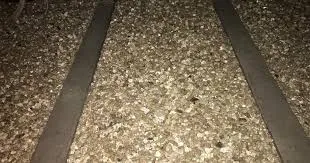Jul . 04, 2024 09:44 Back to list
What Is Vermiculite?
What Is Perlite?
Perlite is a kind of volcanic glass made out of mined volcanic rock. Up to seventy-five percent of perlite is silicon dioxide, but magnesium oxide, potassium oxide, calcium oxide, water, and other elements are also present in smaller amounts. Perlite looks similar to Styrofoam and doesn’t decompose, making it a good soil amendment for soil aeration purposes. There are different grades of perlite including coarse, fine, and medium-grade perlite.
What Is Vermiculite?
Vermiculite is a naturally occurring aluminum-silicate material. In preparation for horticultural uses, vermiculite flakes are mined and heated at high temperatures to form a worm-like shape. With a neutral pH and the ability to retain moisture, vermiculite can make a good addition to a potting mix.
Perlite vs. Vermiculite: What’s the Difference?
Both perlite and vermiculite have neutral pH levels and retain water well. Vermiculite, however, has a reputation for holding a greater amount of water than perlite does. Therefore, perlite would be a better choice for desert climates where succulents grow or for plants like rhododendrons that require less moisture. Vermiculite could soak plant roots with high water levels and lead to root rot.
4 Pros of Perlite
Consider four ways perlite may improve your houseplant or garden soil mix.
- 1. Water retention: Perlite has porous nooks and crannies that can help retain some water in the soil.
- 2. Aeration: In addition to retaining some water, perlite can also retain air, which helps with soil aeration. It also helps prevent soil compaction, helping facilitate good drainage in easily compacted clay soils. Perlite is often added to cactus soil mixes and soil mixes for other drought-tolerant plants.
- 3. Neutral pH level: Perlite won’t affect the pH balance in your soil.
- 4. Affordable: Compared to vermiculite, perlite is relatively affordable.
Vermiculite
Cons of Perlite
The primary disadvantage of using perlite in or as potting soil is that it is not ideal for all plants. While perlite might be perfect for desert plants and plants that need well-draining soil, perlite is not ideal for plants that require consistently moist soil. Perlite is also extremely lightweight and may blow away if it isn’t mixed thoroughly into the soil.
4 Pros of Vermiculite
Consider some of the advantages of using vermiculite as a soil amendment.
- 1. Absorbent: Vermiculite has a greater water-holding capacity than perlite, which is great for promoting moisture retention. Use vermiculite in your garden if you’re growing plants that thrive in moist soil like hydrangeas and ferns.
- 2. Soil aeration: Much like perlite, vermiculite is effective at aerating soil and reducing soil compaction.
- 3. Neutral pH: Like perlite, vermiculite has a neutral pH so it won’t make your soil overly acidic or alkaline.
- 4. Useful for seed starting: Vermiculite can be added to a seed-starting mix along with peat moss to keep seeds moist and assist with germination.
Cons of Vermiculite
Vermiculite can help build a strong growing medium, but it has drawbacks as well. Primarily, vermiculite can hold water effectively, but it might make the soil overly wet and cause root rot for some houseplants. Avoid using vermiculite with plants that require well-draining soil like cacti and succulents. Compared to perlite, vermiculite can also be expensive.
-
Eco-Friendly Granule Covering Agent | Dust & Caking Control
NewsAug.06,2025
-
Fe-C Composite Pellets for BOF: High-Efficiency & Cost-Saving
NewsAug.05,2025
-
Premium Tundish Covering Agents Exporters | High Purity
NewsAug.04,2025
-
Fe-C Composite Pellets for BOF | Efficient & Economical
NewsAug.03,2025
-
Top Tundish Covering Agent Exporters | Premium Quality Solutions
NewsAug.02,2025
-
First Bauxite Exporters | AI-Optimized Supply
NewsAug.01,2025

